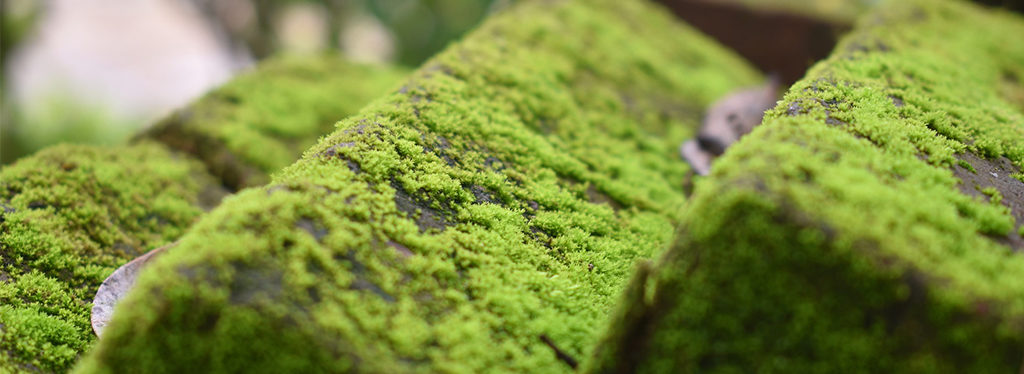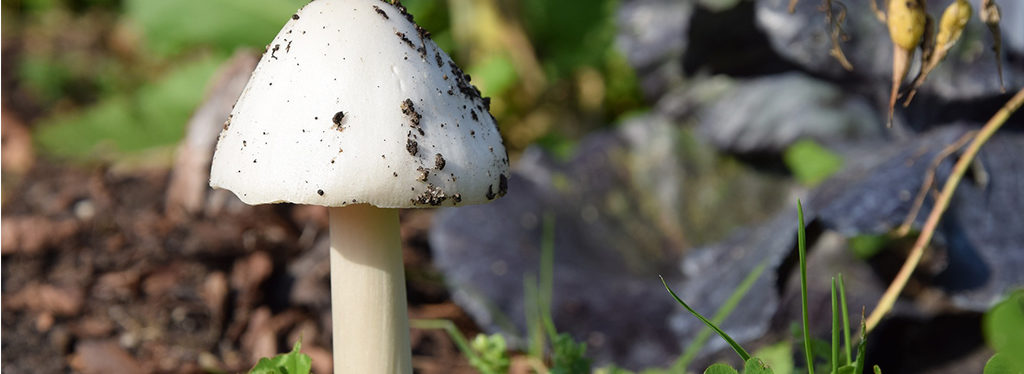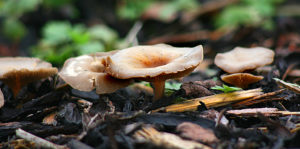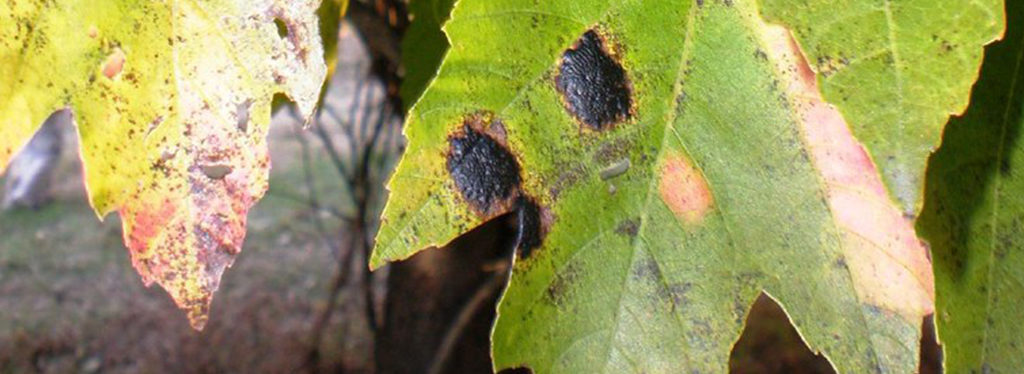Fixing fungus in the landscape is a likely task you’ll have to tackle at some point here in the hot, humid climate of Fort Lauderdale. While it isn’t always easy to help an infected plant recover, there are certainly things you can do to help the cause, and as always, prevention is key. We’ve put together this guide to common types of fungi you’ll find in your landscape and the best methods for preventing and fixing them.

Powdery Mildew
This common garden fungus begins to develop on plant leaves in warm, damp conditions with poor air circulation. It will leave your plant foliage looking like frosted flakes, and although that may sound delicious, trust us, it’s not.
The best way to prevent powdery mildew is to choose varieties with disease resistance. Avoid placing your plants too close together in the garden. Make sure there’s a little wiggle room so a breeze can make its way through. Selective pruning helps increase air flow of dense plants, too. It’s also wise to avoid watering directly onto your plants, especially if it’s a plant with naturally dense foliage. Instead, water at the base of the plants, underneath the foliage so the leaves won’t get damp. Try not to water your lawn late in the evening, because a damp lawn at night time is a prime spot for mildew to develop. Wooly aphids can transmit powdery mildew from plant to plant. If you see an infestation, treat it with neem oil or encourage more beneficial insects, like ladybugs, to visit your garden..
If you spot powdery mildew on your plants, the best course of action is to remove and destroy infected plant parts. (Do not compost plant material infected with powdery mildew.) Use a sulfur-based fungicide to protect healthy plant tissue. Be sure the follow the package directions carefully, because using more fungicide than needed won’t help to eliminate the fungus any more effectively, and it could end up damaging your plants. If your lawn has mildew fungus, treat it with fungicide before you mow the lawn again, or else you might end up spreading it around.
Black Spot
As the name suggests, this fungus causes unsightly black spots on your plants. In later stages, a yellow ring will form, and entire leaves may turn yellow and wilt. While there are several different plants that can be affected by black spot, roses and fruit trees are particularly susceptible. Black spot can even infect the young canes on roses. Regularly checking your plants’ leaves for the early signs of black spot will make fixing the problem much easier.
Black spot can be prevented with a homemade baking soda spray. (1 tsp. baking soda mixed with 1 quart warm water, adding 1 tsp. liquid soap to the mix.) A neem oil solution sprayed directly onto leaves also helps prevent the spread of black spot, as does a treatment with copper sulfate-hydrated lime. Remove any infected leaves from the plant and pick up any that may have fallen off. Dispose of them in the trash, not the compost bin, or the fungus could spread and ruin all of the compost. If your affected plant has branches that are low to the ground, prune off the bottom branches and apply a layer of mulch around the base. Remember to sterilize your garden shears well between each cutting, or this could further spread the fungus.
Blights
The two forms of blight we commonly see are early blight and late blight. Early blight appears as yellow or brown bullseyes on plant leaves, whereas late blight typically starts with pale green spots near leaf edges, turning brown or black over time. Often, late blight also causes a fuzzy mold on the underside of leaves. As with preventing many other types of fungus, it’s a good idea to avoid watering leaves directly, directing water at the roots instead. Tomatoes often fall victim to blight fungus, so staking them, pruning them regularly, and keeping the soil clear of old garden debris should help improve air circulation and prevent fungus development. Choose resistant varieties if possible, and remove any infected plants to prevent the spread of the fungus.
Fixing blight requires you to cut out the affected areas ASAP and toss them directly in the garbage. Applying a copper or sulfur-based fungicide should help as well, but if you find your landscape is particularly prone to blight, and the weather forecast is predicting a long rainy spell up ahead, you can apply some fungicide as a preventative treatment.

Fungus in Landscape Mulch
While mulch can provide our gardens with so many benefits, once in a while it can start to develop fungus, which isn’t exactly ideal. The humidity of Fort Lauderdale creates moist conditions and layered mulch provides a covered, dark environment—a recipe for fungus. By regularly raking your mulch and airing it out, you’ll be better able to prevent fungus from appearing. There are four main types of fungi you’ll find in mulch: slime molds, mushrooms, bird’s nest fungus, and artillery fungus.
Mushrooms don’t exactly pose a threat to your garden, but they can be poisonous, and certain varieties can be pretty stinky, so you can either choose to leave them be or remove them. Slime molds similarly don’t pose a threat to your plants, but they certainly aren’t pleasing to look at (although some varieties do sport a surprisingly fashion-forward shade of fuchsia). Simply scooping up the affected mulch and disposing of it in the trash should be fine. Bird’s nest molds also aren’t dangerous— and honestly, some people think they look kind of cute, so if you aren’t weirded out by them, you can just let them naturally decompose.
Now, artillery fungus is a different story. Its spores travel through the air, and they’re attracted to light-coloured surfaces, so they could end up making their way over to the side of your home or car. It’s pretty unsightly, and not quite easy to remove, so to prevent it from occurring, mix in some mushroom compost with your mulch to help stop its growth. If you see the signs of artillery fungus appearing, remove the affected mulch immediately and apply some fresh mulch over top. If your car or home is affected, scrub it with some soap and water. If this isn’t working, try blasting it with the power washer, but be careful, because removing this stubborn fungus could end up stripping off your paint.
Fixing fungus in the landscape isn’t too difficult if you catch the early signs of development before it starts to spread. Remember to check your plants’ foliage regularly for signs of damage, rake around your landscape mulch, and if necessary, use a little bit of fungicide as a preventative measure. If you’ve got a landscape fungus problem and are unsure of what steps to take, visit us at Living Color in Fort Lauderdale, and one of our experts will be happy to help.


